Historical Sites
Kumamoto was one of the first areas settled in ancient Japan, many myths and legends have their roots here. The noble samurai clans of Hitoyoshi, Kumamoto, Kikuchi and Aso played important roles in history and Kumamoto castle is one of the strongest in Japan.
Musashi Miyamoto, Japan’s most famous swordsman also spent his last years here producing the famous book of Five Rings.
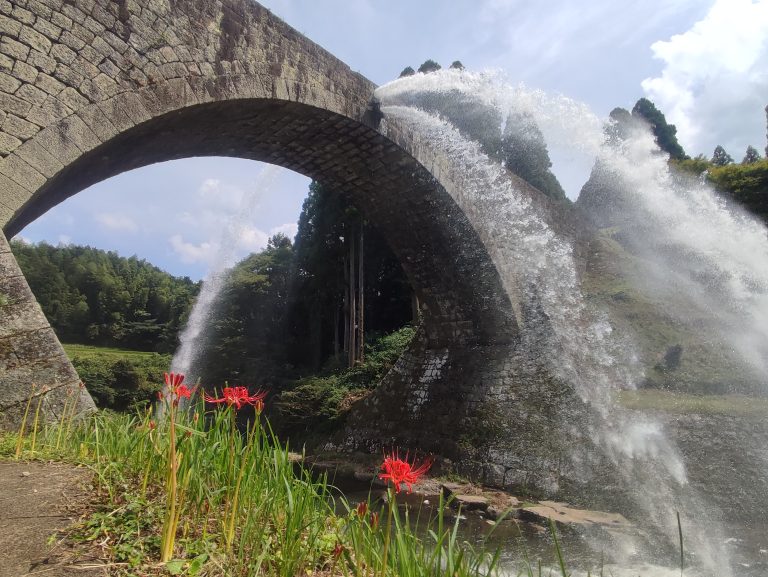
Tsujunkyo Bridge 通潤橋 - Yamato Kumamoto's unique aqueduct Tsujunkyo Bridge is one of Kumamoto's lesser known treasures. Built in 1854 it is not only Japan's largest stone aqueduct but also it's most unusual due to it's dramatic water release designed to remove silt from the water channels. On certain days ... read on

Kyushu's only traditional puppet theatre If you are interested in Japanese traditional arts you are sure to find a visit to the Seiwa Bunraku traditional puppet theatre in Yamato Town fascinating. What is Bunraku? Bunraku is the name given to Japan's traditional puppet theatre which has a history dating back ... read on

The Tomioka Castle was built in 1602 on the Tomioka Peninsula on the western reaches of Amakusa Shimoshima. The castle nicknamed the 'Lying Dragon Castle' was considered a subsidiary castle to Karatsu castle nicknamed the 'Flying Crane'. Tomioka Castle made excellent use of its natural defenses, being located on a hilly penisula ... read on
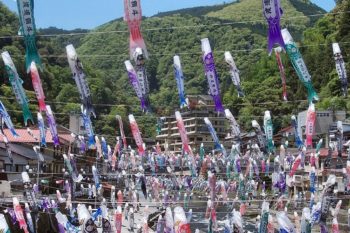
Tsuetate Onsen A hidden valley in the far north of Kumamoto nicknamed 'Kyushu's inner sanctum', the once lively Tsuetate onsen resort has a 1800 year history and is still a fascinating place to visit, not least because of its faded glory and step back in time Showa era atmosphere. The hot ... read on
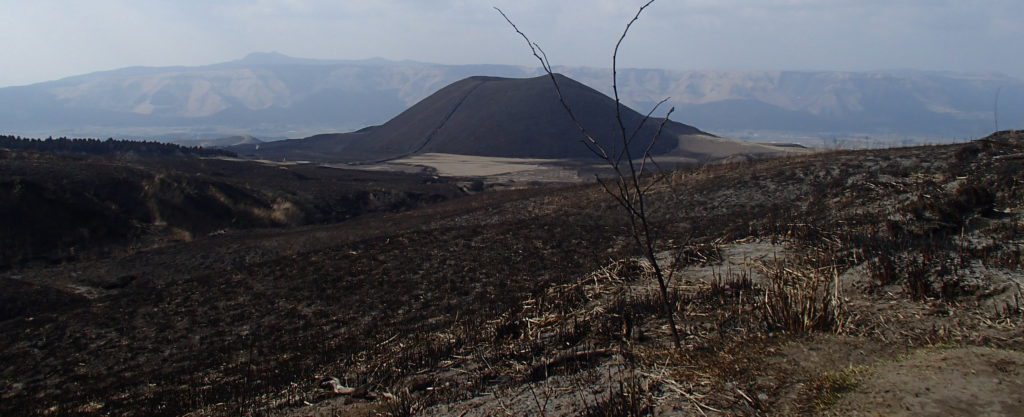
Noyaki - the burning of the grasslands If you visit the Aso area in late February or March you might be surprised to find the lush green grasslands you saw in all the photos scorched and blackened. Don't worry a war has not broken out it's only the yearly Noyaki. Noyaki season ... read on
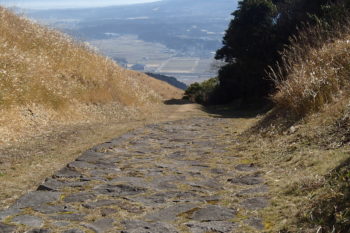
Aso Sankinkotai Road Walk Parts of an ancient highway dating from the end of the 16th century still remain in the Aso region, this short walk takes you from the village of Akamizu (Redwater) up to the top of the caldera wall and back down again. The route follows the path the Kumamoto ... read on

Ancient Burial Mound Museum The Kumamoto Prefectural Ancient Burial Mound museum in Yamaga celebrates the many and various decorated tumuli of Kumamoto. A tumulus is an ancient burial mound, there are approximately 200,000 of these burial mounds scattered over Japan all dating back from 400 to 700 AD. The era ... read on
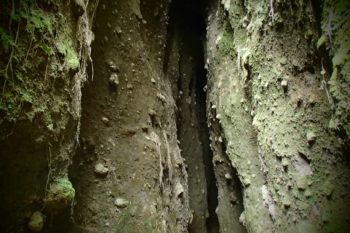
Tonkararin If you love a good mystery - or dark, narrow spaces! - , then you are bound to be intrigued by Tonkararin. The many questions surrounding Tonkararin serve to make the site more interesting and you cannot help but come up with your own theories as you explore. Tonkararin is so mysterious ... read on
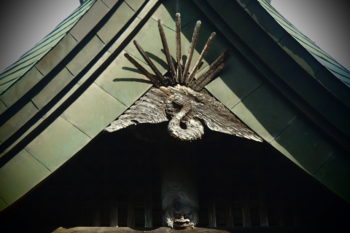
Kokuzo Shrine Tucked away in the shade of the caldera wall in the hamlet of Teno you will find the Kokuzo Shrine 国造神社. Situated only 6 km north of the better known Aso Shrine if you have time the Kokuzo shrine is definitely worth a detour. Why visit? Primarily because here ... read on
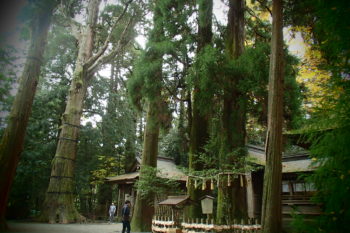
The solemnly peaceful 1800 year old Takachiho Shrine is set in a wonderful grove of towering Japanese Cryptomeria trees, the oldest said to be over 1000 years old. Takachiho Shrine is the head shrine of the 88 shrines of the 18 villages of Takachiho. The most famous of the trees surrounding the ... read on
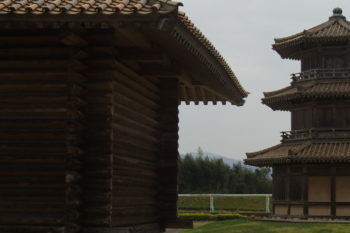
The Kikuchi castle ruins are an archaeological site stretching over 150 hectares on a hillside overlooking the town of Kikuchi. The site is the location of a 1,300 year old hill fort built in the 7th century by the Yamato government to protect the country from invasion from the Korean ... read on
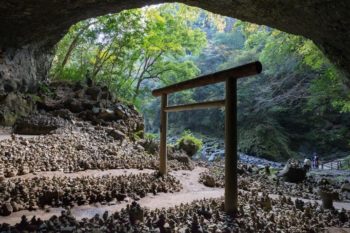
Ama No Yasukawara Cave From the Ama No Iwato Shrine take a 10-minute walk along the Iwato River, past many delicious looking icecream stalls, descend a steepish path over a simple, arched bridge into the river valley, follow the river path for a few minutes and rounding a corner you will suddenly come to a vast ... read on
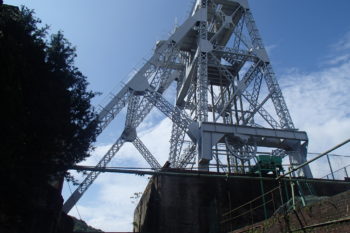
The World Heritage Manda Pit, also known as the Manda Kou in Japanese, is part of the Miike Coal Mine, which was once the largest coal mine in Japan. The mine played a huge role in enabling Japan's modernisation during the Meiji era and war years, producing 10% of Japan's coal. ... read on

Yamaga Lantern Dance Festival - Yamaga Toro Matsuri 山鹿吐露祭 in Japanese, is held on the evenings of August 15th and 16th in the city of Yamaga every year. The highlight is the One Thousand Lantern Dance when hundreds of women, dressed in simple white summer yukata and red obi sashes dance elegantly through the night ... read on
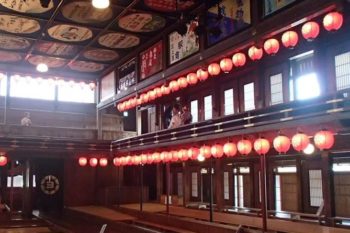
The town of Yamaga is situated an hour's drive north of Kumamoto City. In its heyday, over a hundred years ago, Yamaga was a prosperous, bustling agricultural town and a very lively onsen retreat. In 1910 the local merchants funded the very first kabuki theatre in Kyushu and called it the Yachiyoza (the ... read on
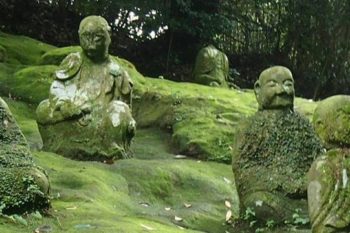
The Reigando Cave, in Japanese simply Reigando 霊巌洞, is a mysterious and sacred cave located on the Western slopes of Mt. Kinpo the 200,000 year old extinct volcanic peak that is the backdrop to Kumamoto City. Famed as the cave where the great philosopher swordsman Musashi Miyamoto spent his last ... read on
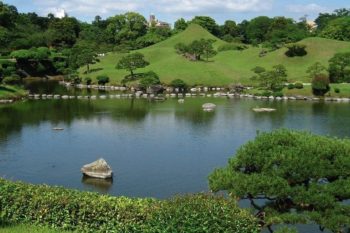
Suizenji Gardens Also known as Suizenji Jojuen Park, these beautiful gardens are situated in the east of the city, a 15 minute tram ride from the city center. Suizenji Jojuen is a very popular destination for both Japanese and international tourists, however, on a weekday it is possible to have the ... read on
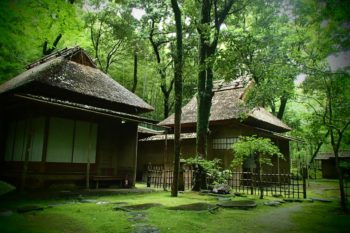
Tatsuda Nature Park is well worth putting on your itinerary for a day out in the city. Tucked away behind Kumamoto University, perhaps its difficult to find location means that it is not more well-known. The park stands on Mt. Tatsuda, a forested hill in the north eastern part of the ... read on
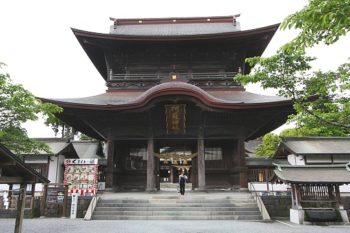
Earthquake update: The main gate and hall of worship of Aso Shrine sadly collapsed in the Kumamoto earthquake of April 16th 2016. However, the shrine can still be visited and festivals will still be held throughout the year. In fact witnessing the damage first hand is a very humbling experience. ... read on

Recently granted World Heritage Status the Misumi West Port (Misumi Nishi Kou) in Uto, at the entrance to the islands of Amakusa is an interesting stop off if you are journeying south. The port is situated around 90 minutes drive from Kumamoto City. The Misumi West Port was built at the ... read on

Kumamoto castle suffered severe damage in the earthquakes of April 14th and 16th, it is currently closed to visitors. The mighty and impenetrable Kumamoto Castle has dominated and protected the city of Kumamoto for over 400 years. Recently ranked the top Japanese Castle to visit on Trip Advisor, Kumamoto Jo has long ... read on
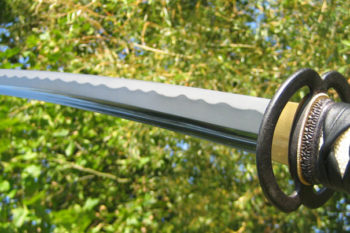
“There is nothing outside of yourself that can ever enable you to get better, stronger, richer, quicker, or smarter. Everything is within. Everything exists. Seek nothing outside of yourself.” ― Miyamoto Musashi, The Book of Five Rings Miyamoto Musashi is a name every Japanese person knows as belonging to the greatest samurai ... read on
Kumamoto was one of the first areas settled in ancient Japan, many myths and legends have their roots here. The noble samurai clans of Hitoyoshi, Kumamoto, Kikuchi and Aso played important roles in history.
Read the posts below to find out more about the variety of historical places you can visit in the area.

Tsujunkyo Bridge 通潤橋 – Yamato Kumamoto’s unique aqueduct Tsujunkyo Bridge is one of Kumamoto’s lesser known treasures. Built in 1854 it is not only Japan’s largest stone aqueduct but also it’s most unusual due to it’s dramatic water release designed to remove silt from the water channels. On certain days … read on

Kyushu’s only traditional puppet theatre If you are interested in Japanese traditional arts you are sure to find a visit to the Seiwa Bunraku traditional puppet theatre in Yamato Town fascinating. What is Bunraku? Bunraku is the name given to Japan’s traditional puppet theatre which has a history dating back … read on

The Tomioka Castle was built in 1602 on the Tomioka Peninsula on the western reaches of Amakusa Shimoshima. The castle nicknamed the ‘Lying Dragon Castle’ was considered a subsidiary castle to Karatsu castle nicknamed the ‘Flying Crane’. Tomioka Castle made excellent use of its natural defenses, being located on a hilly penisula … read on

Tsuetate Onsen A hidden valley in the far north of Kumamoto nicknamed ‘Kyushu’s inner sanctum’, the once lively Tsuetate onsen resort has a 1800 year history and is still a fascinating place to visit, not least because of its faded glory and step back in time Showa era atmosphere. The hot … read on

Noyaki – the burning of the grasslands If you visit the Aso area in late February or March you might be surprised to find the lush green grasslands you saw in all the photos scorched and blackened. Don’t worry a war has not broken out it’s only the yearly Noyaki. Noyaki season … read on

Aso Sankinkotai Road Walk Parts of an ancient highway dating from the end of the 16th century still remain in the Aso region, this short walk takes you from the village of Akamizu (Redwater) up to the top of the caldera wall and back down again. The route follows the path the Kumamoto … read on

Ancient Burial Mound Museum The Kumamoto Prefectural Ancient Burial Mound museum in Yamaga celebrates the many and various decorated tumuli of Kumamoto. A tumulus is an ancient burial mound, there are approximately 200,000 of these burial mounds scattered over Japan all dating back from 400 to 700 AD. The era … read on

Tonkararin If you love a good mystery – or dark, narrow spaces! – , then you are bound to be intrigued by Tonkararin. The many questions surrounding Tonkararin serve to make the site more interesting and you cannot help but come up with your own theories as you explore. Tonkararin is so mysterious … read on

Kokuzo Shrine Tucked away in the shade of the caldera wall in the hamlet of Teno you will find the Kokuzo Shrine 国造神社. Situated only 6 km north of the better known Aso Shrine if you have time the Kokuzo shrine is definitely worth a detour. Why visit? Primarily because here … read on

The solemnly peaceful 1800 year old Takachiho Shrine is set in a wonderful grove of towering Japanese Cryptomeria trees, the oldest said to be over 1000 years old. Takachiho Shrine is the head shrine of the 88 shrines of the 18 villages of Takachiho. The most famous of the trees surrounding the … read on

The Kikuchi castle ruins are an archaeological site stretching over 150 hectares on a hillside overlooking the town of Kikuchi. The site is the location of a 1,300 year old hill fort built in the 7th century by the Yamato government to protect the country from invasion from the Korean … read on

Ama No Yasukawara Cave From the Ama No Iwato Shrine take a 10-minute walk along the Iwato River, past many delicious looking icecream stalls, descend a steepish path over a simple, arched bridge into the river valley, follow the river path for a few minutes and rounding a corner you will suddenly come to a vast … read on

The World Heritage Manda Pit, also known as the Manda Kou in Japanese, is part of the Miike Coal Mine, which was once the largest coal mine in Japan. The mine played a huge role in enabling Japan’s modernisation during the Meiji era and war years, producing 10% of Japan’s coal. … read on

Yamaga Lantern Dance Festival – Yamaga Toro Matsuri 山鹿吐露祭 in Japanese, is held on the evenings of August 15th and 16th in the city of Yamaga every year. The highlight is the One Thousand Lantern Dance when hundreds of women, dressed in simple white summer yukata and red obi sashes dance elegantly through the night … read on

The town of Yamaga is situated an hour’s drive north of Kumamoto City. In its heyday, over a hundred years ago, Yamaga was a prosperous, bustling agricultural town and a very lively onsen retreat. In 1910 the local merchants funded the very first kabuki theatre in Kyushu and called it the Yachiyoza (the … read on

The Reigando Cave, in Japanese simply Reigando 霊巌洞, is a mysterious and sacred cave located on the Western slopes of Mt. Kinpo the 200,000 year old extinct volcanic peak that is the backdrop to Kumamoto City. Famed as the cave where the great philosopher swordsman Musashi Miyamoto spent his last … read on

Suizenji Gardens Also known as Suizenji Jojuen Park, these beautiful gardens are situated in the east of the city, a 15 minute tram ride from the city center. Suizenji Jojuen is a very popular destination for both Japanese and international tourists, however, on a weekday it is possible to have the … read on

Tatsuda Nature Park is well worth putting on your itinerary for a day out in the city. Tucked away behind Kumamoto University, perhaps its difficult to find location means that it is not more well-known. The park stands on Mt. Tatsuda, a forested hill in the north eastern part of the … read on

Earthquake update: The main gate and hall of worship of Aso Shrine sadly collapsed in the Kumamoto earthquake of April 16th 2016. However, the shrine can still be visited and festivals will still be held throughout the year. In fact witnessing the damage first hand is a very humbling experience. … read on

Recently granted World Heritage Status the Misumi West Port (Misumi Nishi Kou) in Uto, at the entrance to the islands of Amakusa is an interesting stop off if you are journeying south. The port is situated around 90 minutes drive from Kumamoto City. The Misumi West Port was built at the … read on

Kumamoto castle suffered severe damage in the earthquakes of April 14th and 16th, it is currently closed to visitors. The mighty and impenetrable Kumamoto Castle has dominated and protected the city of Kumamoto for over 400 years. Recently ranked the top Japanese Castle to visit on Trip Advisor, Kumamoto Jo has long … read on

“There is nothing outside of yourself that can ever enable you to get better, stronger, richer, quicker, or smarter. Everything is within. Everything exists. Seek nothing outside of yourself.” ― Miyamoto Musashi, The Book of Five Rings Miyamoto Musashi is a name every Japanese person knows as belonging to the greatest samurai … read on
